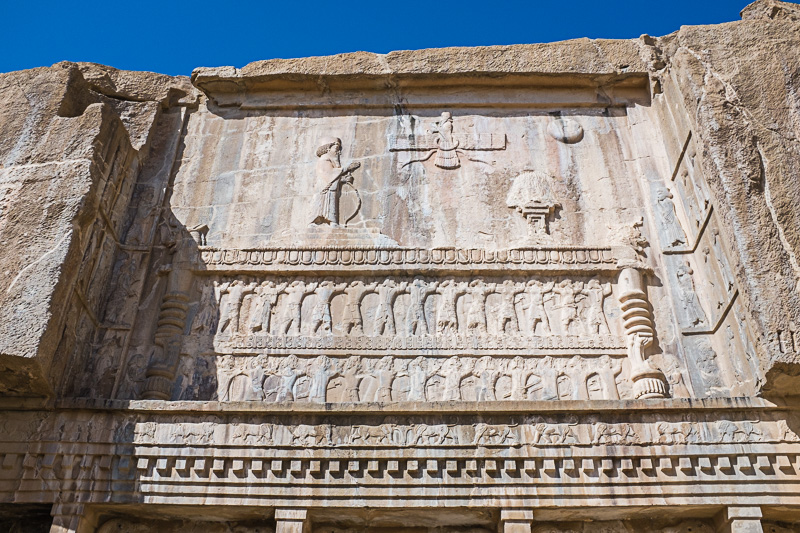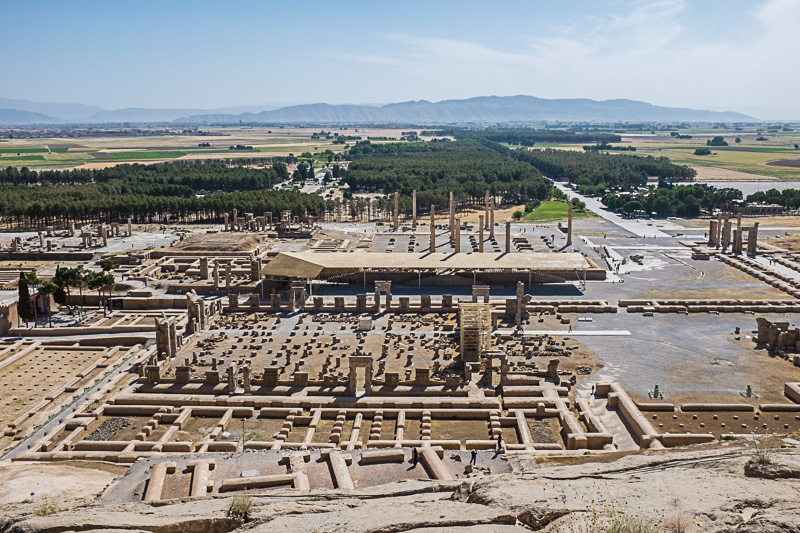The day is hot, very hot, and as I approach the ruins of Persepolis (Parsa), the capital of the once mighty ancient Persian Empire, I’m already working up a sweat. As the sun beats down, and I get closer to the ruins of this city which was founded in 515 BC by Persian King Darius I, I’m awed by the glimpses that I can see and keen to get up there and start exploring.

Finally, I reach the stairs and am immediately struck by their design. Each step is long and wide, in stark contrast to many of the stairs that I have seen at ancient sites around the world that tend to have quite high, narrow steps. The reason for this, I am told, is so that when royalty and those of noble birth entered and existed Persepolis, they could do so on horseback, their feet never having to touch the ground.

After ascending the stairs (on foot alas, not horseback), the first thing I notice is the majestic entrance to the Gate of All Nations, the construction of which was ordered by the Achaemenid king Xerxes I, son of the founder of Persepolis, Darius I.

By all accounts Persepolis was a grand city at its peak, before it was burned to the ground by Alexander the Great (or as many in this part of the world refer to him, Alexander the Bastard). Alexander took the city in 330 BC and, after several months of occupation, allowed his troops to loot the city’s treasures. Why the city was burned to the ground is point of contention, with the exact answer unknown. Some say the fire was accidental, while other say it was revenge for the burning of the Acropolis of Athens during the Second Persian invasion of Greece.


Exiting the Gate of All Nations, I see an expanse, at the end of which the Apadana Palace can be found. This was the largest, and one of the original structures of Persepolis, and was used as the main hall of the kings. It was here where dignitaries and guests would be received and entertained. By all accounts, the Apadana Palace was a grand, beautiful building, and the feasts and ceremonies that were held here were equally grand and extravagant.


Bas-reliefs, showing various aspects of Persian life, can be found all over Persepolis. Much gold and silver was used, but these precious materials are long gone. Why so much of Persepolis was destroyed in the fire relates to the fact that wood was heavily used in Persepolian architecture. The grand wooden columns, beams and shafts that were covered with sheets of ornate metal didn’t stand a chance against the flames.


Everywhere I look there’s something that catches my eye. What the column below represents I’m unsure of. Regardless of the story being told by the artwork adorning it, the column is telling a story simply by its existence and preservation.

The second largest structure in Persepolis was the Throne Hall, or “Hall of a Hundred Columns”. All that remains is this. In the background, carved into the mountain is the tomb of King Artaxerxes III. Pictures can’t begin to convey the sheer scale of the site and what remains of the once grand structures.

Walking up the pathway towards the top of Kuh-e Rahmet (“the Mountain of Mercy”), I soon reach the tomb of King Artaxerxes III. This majestic tomb, carved into the mountain itself, is awe inspiring. Unfortunately the insides of the tomb are strictly off limits.

I continue my ascent upwards until I’m as high up as one can possibly get. Turning around, this is the view that I am privileged to see. It’s hard not to think about human history, and what a speck our existence as individuals on this planet truly is.


Nowruz is the name of the Persian New Year and translates to English literally as “the New Day”. The Zooastrian bas-relief below symbolises Nowruz – an eternally fighting bull (the Moon) and lion (the Sun).

A small palace, the Tachara, is the last place I visit before leaving Persepolis. The building was used mostly for ceremonial rather than residential purposes, until the other grander structures were built.

Empires rise and fall, cultures change and adapt, and nothing stays the same. While it is true that travel opens our eyes and teaches us so much, it’s also true that it asks of us many questions and forces us to think about things we hadn’t thought about before. Walking through Persepolis, I’m struck by the urge to want to learn more. The more I travel, the more I see, the more I realise that I know nothing.

